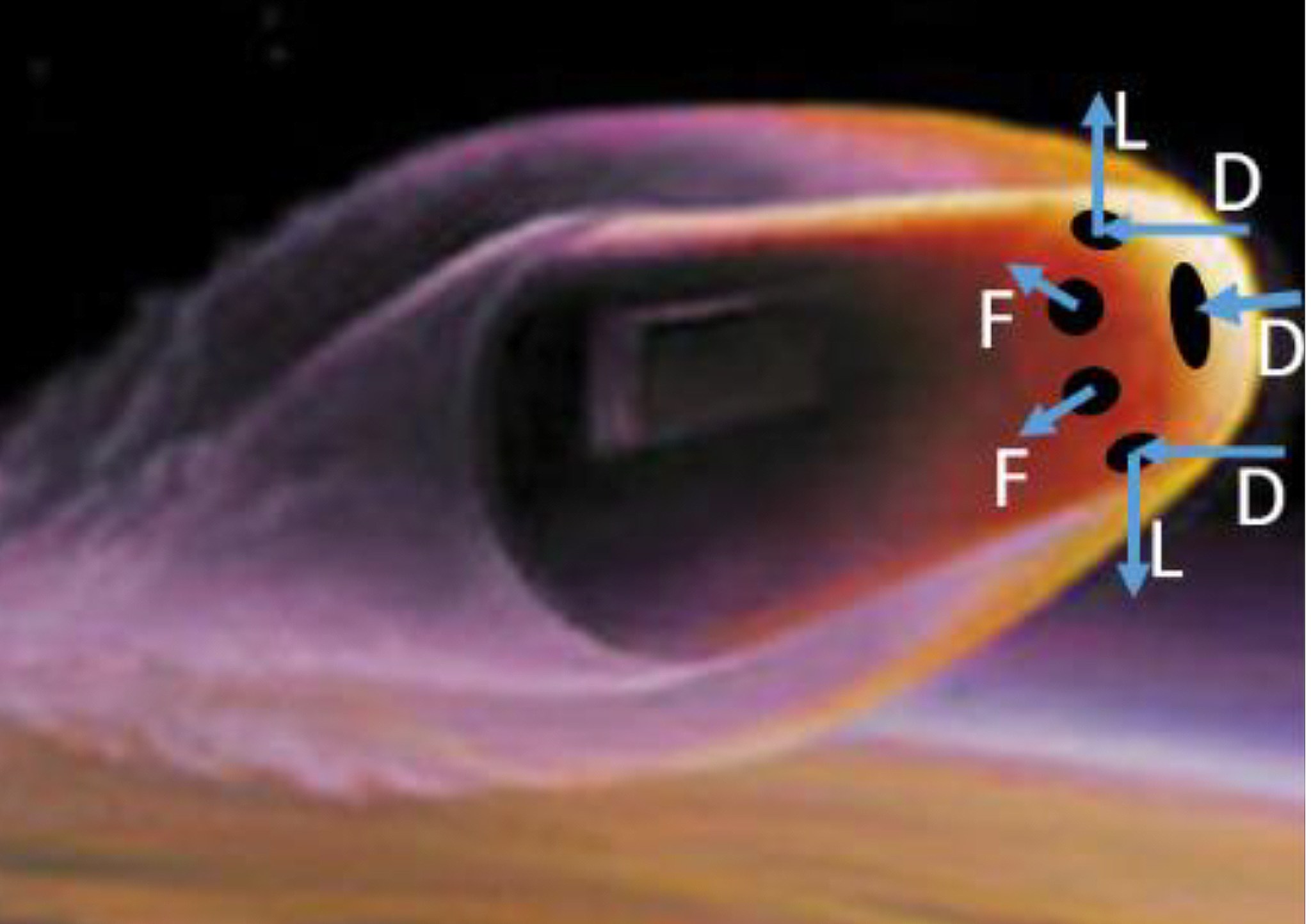Robert Moses
NASA Langley Research Center
Aerocapture offers huge potential increases in science return by allowing the ability to deliver larger payloads, enabling faster transits of existing instruments, or offering flexibility to integrate payloads onto a single and perhaps cheaper launch vehicle. Previous calculations quantified the cost and delivered mass advantages of aerocapture for eleven representative missions for eight possible destinations in our solar system. Direct comparisons were made between aerocapture and competing orbit insertion techniques based on state-of-the-art and advanced chemical propulsion, solar electric propulsion, and aerobraking. The results show that aerocapture is enabling for three of the missions: delivery of spacecraft into elliptical orbits at Neptune and circular orbits at Jupiter or Saturn. Aerocapture was found to significantly enhance five other missions by putting larger, and usually very much larger, spacecraft into the target orbit for approximately the same overall delivery cost as the best non-aerocapture alternative: delivery of spacecraft into Venus circular orbits (79% more mass), Venus elliptical orbits (43%), Mars circular orbits (15%), Titan circular orbits (280%), and Uranus elliptical orbits (218%). Aeroassist orbit transfer at Earth showed that aerocapture technology offered a 32% cost per kg reduction compared to chemical propulsion [Hall, 2005].
A previous study showed that aerocapture at Neptune requires a lift-to-drag (L/D) ratio between 0.6 and 0.8 to fly a tight entry corridor to achieve orbit insertion. Since traditional 70-deg sphere-cone planetary entry vehicles can only achieve a maximum practical L/ D of ~0.25, a special Neptune orbiter concept was developed. A 2004 study showed that current thermal protection system (TPS) technologies, even when applied in large quantities over most of the entry vehicle, will not survive the heat pulse for Neptune entries. The latest advances in TPS will not survive either.
Our proposed work may address both the L/D and TPS issues for Neptune and other missions at these high entry velocities. Based on our past study on MHD aerospace applications, as well as on other early studies, our expectations are that a magnet placed near the nose of the vehicle will increase the bow shock stand-off distance, substantially decrease stagnation point heat flux, and considerably mitigate the TPS requirements for such missions. Likewise, our preliminary analysis shows that magnets placed on the side of the vehicle nose will produce side forces for increasing lift (and thus L/D). This approach leverages our vast experience in entry systems, rocket and vehicle design, mission architectures, and mission analysis tools, specifically for Entry, Descent, and Landing (EDL) simulations to conduct trades that include vehicle design, atmospheric modeling, and interplanetary trajectories. Science instrument missions to the Ice and Gas Giants could fly larger payloads with faster trip times. Human-scale payload missions to Mars and Earth Return would benefit from this system approach and enable fast crew flights lasting only 39 days (instead of 3 months or more) to slow down upon arrival at Mars. Such fast transits would serve to mitigate crew radiation exposure. Additional goals of the proposed Phase 1 activity are to illustrate large reductions in TPS mass for aerocapture trajectories involving high hypersonic velocities, to eliminate the need for a separate deployable decelerator, and to show opportunities for reusable TPS during aerocapture (including for reusable upper stages), thus avoiding system complexities and mass required for integrating a separate TPS. Furthermore, this approach could be validated through a series of ground and near-term Earth flight test opportunities.































